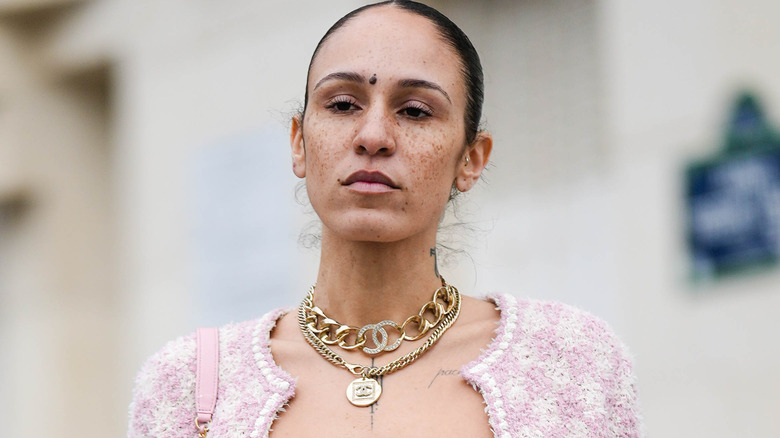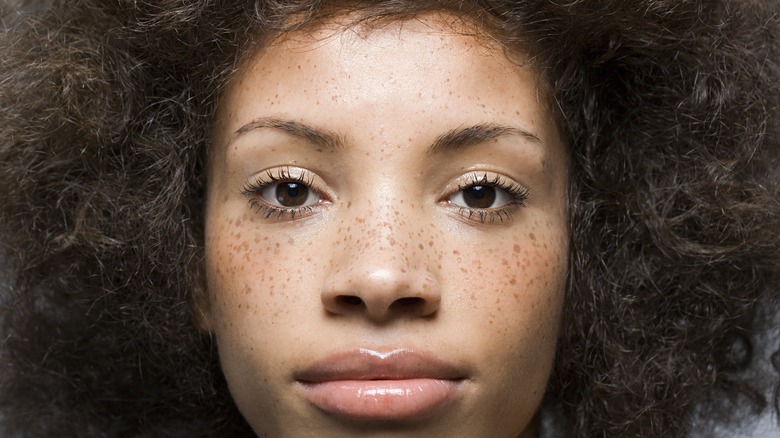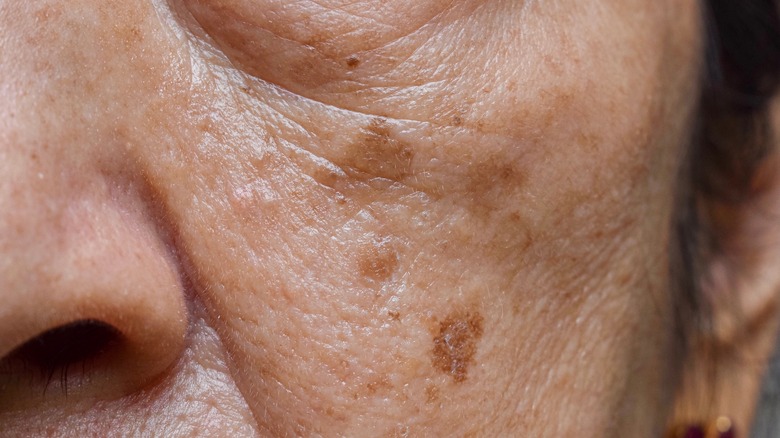Sun Spots Vs. Freckles: How To Know The Difference And Why It Matters
Everyone loves a fun day out in the sun, but there can be consequences if you don't protect your skin with ever-important sunscreen. Freckles and sun spots have many similarities, even though they are different patches that appear on the skin after exposure to UV rays. Freckles rely more on genetics, while sun spots develop with age.
Freckles are small flat spots that tend to appear in groups, while sun spots are typically larger and darker. While both are usually benign, this isn't always the case. It's essential to know how to identify freckles and sun spots so you can recognize when one looks potentially dangerous and visit a dermatologist.
Since you need sun exposure to get both freckles and sun spots, you should be concerned when they appear on an area of your body that is always covered. How the hyperpigmentation looks also tells you if it's an average mark or potentially cancerous. Melanomas stand out from benign marks as they often have blurry borders, look asymmetric, and can be multiple shades of brown (via National Cancer Institute). At first, it may look similar to a freckle or sun spot, but it can change as it leaves the early stages of cancer.
Knowing what to look for in freckles and sun spots can save you from leaving a melanoma untreated.
Freckles are genetic
Freckles are nothing to worry about. They usually appear on people with lighter complexions as a way for their skin to protect them from the sun. Instead of getting an even tan, their melanocytes gather together to make the spots that are freckles, per Cleveland Clinic. They're a genetic trait, so for some people, the only way they can prevent them from developing on their skin is to never go into the sun. Even children can have freckles after spending an extended period of time outside. You need the UV rays to shine on you to get this type of hyperpigmentation. That's why they're primarily seen on the face, shoulders, arms, and chest.
Identifying freckles over sun spots is easy. They're flat spots that appear in shades of brown and sometimes red. You can find them in groups, with each mark being relatively small. The best way to recognize whether you have freckles is if they begin to fade away after summer is over. Without consistent exposure to UV rays, they will start to disappear. That's why many people don't have a constellation of freckles on their face during winter. These marks aren't dangerous (and freckles can even be fashionable!), but they do indicate that you need to wear more sunscreen.
Sun spots come from spending years in the sun
Sun spots are similar to freckles but slightly different. They aren't genetic, although people with lighter skin tones are more likely to get them. The skin needs harmful UV rays to shine on it for a sun spot to appear, per Mayo Clinic. Then the body will produce melanin as a way to protect you. Except, since it has been doing this over and over again every year, the area of discoloration becomes larger as multiple pigmented cells lump together.
The sun spot will be flat and can be any shade of brown. They're typically darker and larger than freckles, with the largest being around 2 centimeters in diameter. They may fade over time, but it's unlikely. Sun spots are also harmless. Just keep an eye on the hyperpigmentation to ensure it doesn't change over time. If it does, you should see a dermatologist to rule out the beginning stages of melanoma.
How old you are when you notice a new mark is very relevant, as they usually develop on people who are in their mid-thirties or older, per Center Aesthetic Dermatology. That's why they are also called age spots and liver spots. Children don't get these patches on their skin because they haven't gotten as many years of sun exposure. If you do notice something that looks like an age spot when you're under 30, it's important to seek a medical opinion.


